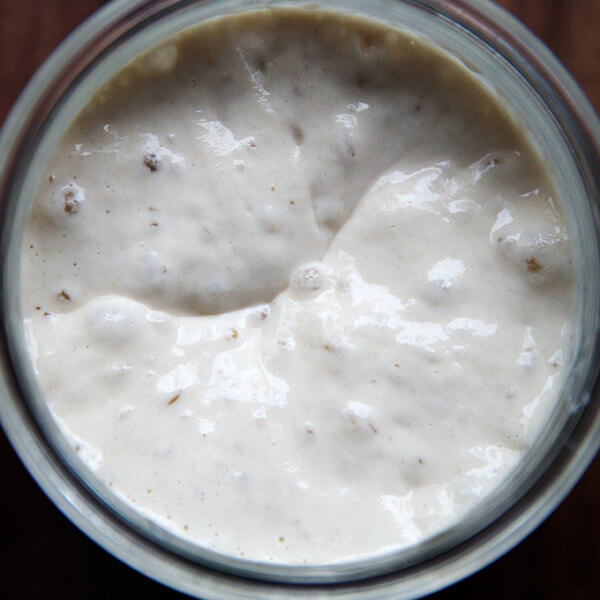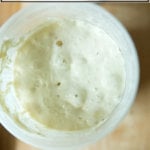Description
Where to Buy a Sourdough Starter
I have had success purchasing and activating sourdough starters from three places:
- Breadtopia ($9)
- King Arthur Flour ($9)
- Cultures for Health ($11)
As with all sourdough bread baking (and all baking in general), you will have the best results if you measure with a digital scale. The amount of starter you start with is not really important here. What is important is that you feed your starter with equal parts by weight flour and water — this is called a 100% hydration starter, and it is what many sourdough bread recipes, including all of the ones on this site, call for.
Flour
If you can find King Arthur Flour organic all-purpose flour at your local supermarket, buy that. Organic flour or a little bit of freshly milled flour will help your starter thrive.
Water
I always use tap water that I’ve left to sit out overnight, which ensures any chlorine has evaporated. In some places, letting water sit out overnight will not be effective, and your tap water may kill your starter. If you are unsure about your water, consider buying a gallon of spring water to use exclusively for feeding your starter until you get the hang of the process.
Ingredients
- 45 grams (or more or less) sourdough starter, see notes above
- 45 grams flour, see notes above
- 45 grams water, see notes above
Instructions
To Activate Your Sourdough Starter:
- Place starter in a vessel. I love these deli quart containers for this purpose.
- Add 45 g each of all-purpose flour and room-temperature water. (Note: The consistency should look like a thick batter.)
- Wait. You may see bubbles and action (rising!) in as few as 6 hours; it may take more like 18 to 24 hours. Variables include the time of year, the temperature of your kitchen, the temperature of your water, the type of flour you are using, etc.
- When the starter has roughly doubled in volume, it’s likely ready to go. Drop a spoonful of it in a glass of water. If it floats, you’re ready!
- If it doesn’t float after 24 hours, add more flour and water (equal parts), stir again, and wait.
- If you aren’t seeing any action after another 12 hours, discard most of it, and add more flour and water (equal parts), stir, and wait. Just be patient. Before you know it, your starter will be rising and bubbling and ready to go.
To Feed Your Sourdough Starter:
-
Place the vessel holding your starter on a scale, and add 45 g flour:
2. Add 45 g water:
3. Stir together and mark the top of the mixture with a rubber band:
4. Wait until the starter doubles or nearly doubles:
5. Test it! If it floats, you’re good to go!
How to Maintain Your Sourdough Starter:
- After I use my starter for a bread recipe, I do one of two things: If there is a fair amount of starter left (a half cup or 100 g), I simply stir it up, cover it, and stash it in the fridge. But if there are only a few tablespoons of starter left, I like to replenish it with a very small amount of flour and water (45 g of each). Once I add the flour and water and stir it all together, I let it rise until it doubles. Then I cover the vessel and stash it in the fridge.
- Every time I use it or feed it, I discard most of it and feed it with equal amounts by weight water and flour.
- When life gets in the way, and I can’t find time for sourdough, I tend to it every 2-3 weeks by discarding most of it and feeding it with 45 g each flour and water.
To Store Your Sourdough Starter
If you are not baking regularly, store your starter in the fridge.
My preferred storage vessel is a deli quart container. When I store my starter in the fridge, I use the lid that comes with the quart container. When I feed my starter and let it sit at room temperature, I use a breathable lid.
Ideally, strive to feed your starter roughly once a week or every two weeks if you are not finding time to bake regularly. If you are baking regularly, feeding your starter once a week will be a natural part of your baking rhythm. If you are looking for ideas for what to do with the discard, try these sourdough flour tortillas or make peasant bread as outlined in this troubleshooting post.
Note: I’ve left my starter for as long as three to four weeks in the fridge without feeding it, and it has “awakened” beautifully, though I don’t recommend, if you can help it, waiting that long in between feedings.
- Prep Time: 24 hours
- Category: Bread
- Method: Sourdough





